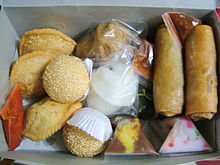
Don’t believe everything you see on Instagram. This is Dominique Druckman at a photo shoot that makes it look like she’s relaxing at a spa. Dominique Druckman reclines on a tuft of red and white rose petals, her eyes closed, her skin dewy, a tranquil smile tugging at the corners of her perfectly tinted pink lips. According to her Instagram tag, Druckman is recharging at a Hollywood spa, but that couldn’t be further from the truth. She’s in a backyard, awkwardly propped onto a small plastic kiddie pool filled with flowers. A photographer stands over her, angling for the perfect shot. The kind that makes Druckman’s followers believe she’s living a luxurious life they could also have … if they just buy the expensive sunglasses and sneakers she’s hawking. At an audition for Fake Famous, Chris Bailey tries to show off his influencer potential. Thing is, many of her followers aren’t real people. They’re bots. Druckman knows this. She’s part of a social experiment chronicled in the compelling new HBO documentary Fake Famous, written and directed by veteran technology journalist Nick Bilton. For the film — his first — Bilton attempts to turn Druckman and two other LA residents with relatively small Instagram followings into social media influencers by purchasing an army of fake followers and bots to “engage” with their posts. The three were chosen from around 4,000 people who responded to a casting call asking one simple question: “Do you want to be famous?” The documentary, on HBO now, feels plodding at times (or maybe it’s just tedious spending time with fame chasers), but it explores intriguing questions for our influencer-influenced times. Will people look at the trio differently as their follower counts rise? Will their lives change for the better? And in a world where numbers equal fame, what is the true nature (and cost) of fame anyway? The questions are worth exploring for anyone who’s felt a tinge of envy scrolling through feeds of glamorous getaways and perfectly made-up miens. At least one of the newly anointed influencers discovers a soaring follower count isn’t good for his mental health. <iframe id="iframe_youtube" class="optanon-category-3" website
On some level, most of us understand that <a website media presents carefully curated versions of other people’s realities and that influencers’ living rooms aren’t always bathed in the perfect sunlight. Last year, for example, Instagram influencer Natalia Taylor <a website a Bali vacation with pics snapped at Ikea to remind her followers not to believe everything they see. And who could forget the disastrous Fyre Festival hyped by the influencer crowd? But Bilton, formerly of The New York Times and now a correspondent for Vanity Fair, turns his unflinching reporter’s eye more broadly and methodically to this bizarre influencer world where followers, makanan khas dari bali likes and comments function as a cultural currency. In doing so, he exposes just how fake that world can get. Spoiler alert: very. As Bilton hops on his phone to buy thousands more bots for his stars, we see that purchasing fake followers is as simple and quick as downloading an app. In one of the film’s more amusing scenes, Bilton’s wife, lying next to him in bed, asks when he’s going to sleep. “Just buying some bots, give me a second,” he answers. You can even choose your bots’ gender, nationality and political leaning. “Some of the most famous people in the world have 50 or 60 percent bots on their page,” says one bot dealer interviewed in the film. Fake Famous director Nick Bilton at auditions for the film. Around 4,000 people responded to a casting call with one simple question: “Do you want to be famous?” But the faking doesn’t stop with imaginary Instagram friends. It’s possible, we learn, to fake bids on eBay listings, fake sales of books and fake reviews of movies. And we see once again, as Natalia Taylor’s Ikea photo shoot proved, how hard it can be for followers to delineate real from staged. Pro tip I got from Fake Famous: Hold a toilet seat next to an image of a beach and you’ve got a convincing shot of you looking out an airplane window as you land for your dream island vacation. Fake Famous makes sure to point out that influencers can have a positive impact, raising awareness of issues like Black Lives Matter and the climate crisis and encouraging voter registration. But it paints an unsettling picture of a world in which a higher follower count not only enhances feelings of self-worth, but can make you more likely to get hired or attract friends and romance, even if your persona is entirely fabricated. The more glamour shots Druckman posts, the more free jewelry she gets from companies eager to see their products promoted. A fake post about working out at a fancy private gym gets Fake Famous subject Chris Bailey, a budding fashion designer, a real session at a fancy private gym in exchange for posting about the business. A strength of the film is its dismantling of the influencer economy, where influencers and profit-driven companies symbiotically support fake followers, fake photos, fake everything. “As you can imagine,” Bilton says, “it’s not really in the best interest of bankers to ask if the people on the platforms are real, because the money surely is.” But is all the fakery just P.T. Barnum for the 21st century? Or will the digital deception have some lasting impact on our understanding of truth? Maybe Fake Famous 2 can tackle those questions. I’d totally follow that.
HBO
HBO
window.CnetFunctions.logWithLabel(‘%c One Trust ‘, “IFrame loaded: iframe_youtube with class optanon-category-3″);
HBO
